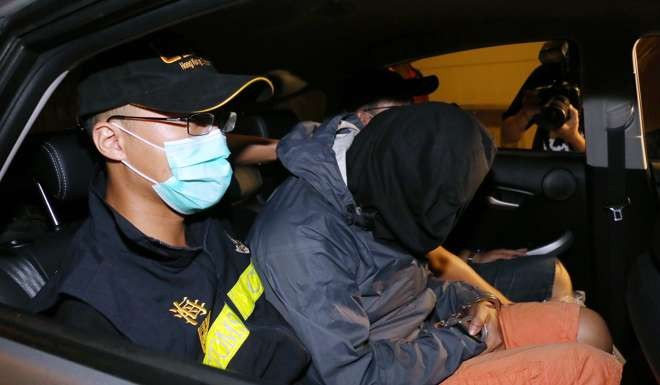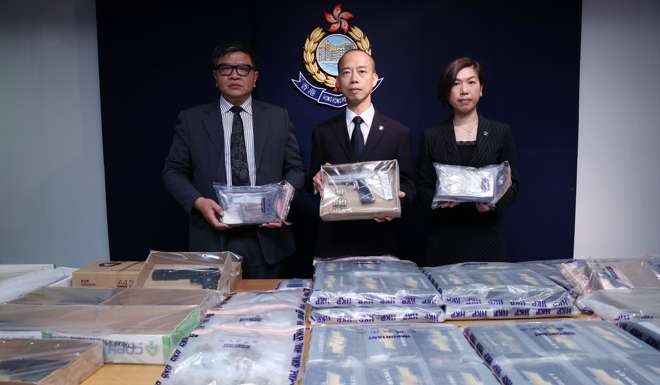
South American cocaine gangs increasingly target Asia-Pacific as US and European markets become saturated
Hong Kong reports threefold rise in cocaine seizures since 2014, with much of the drug destined for an increasingly affluent market in mainland China

A push into the Asia-Pacific region by notorious South American drug cartels has seen the amount of cocaine seized in Hong Kong triple in less than two years, sources have told the Sunday Morning Post.
As traditional markets in the United States and Europe reach saturation point, some of the world’s most feared narcotics trafficking gangs are increasingly targeting the region – and an increasingly affluent China is very much on their radar.
Seizures in Hong Kong have more than tripled over the past two years. More than 440kg of cocaine was seized in the first seven months of this year, up from 130kg in the whole of 2014.
The extent of the explosion has led anti-drugs officials – including those in Hong Kong and the mainland – to put finding ways of combating the problem on the agenda at a meeting of heads of national drug law enforcement agencies in the Asia-Pacific region to be held in Colombo, Sri Lanka, in October.
Local officials will boost intelligence exchanges and cooperation with their regional counterparts to combat the trade during the meeting, the Post has learned.
It is understood the heads of the force’s Narcotics Bureau and the Customs Drug Investigation Bureau will attend the annual meeting organised by the United Nations Office on Drugs and Crime (UNODC).
According to the organiser, the meeting will allow participants to discuss major drug trafficking trends and countermeasures, exchange expertise and share best practices and information on drug-related matters.
“There are signs of increases in the trafficking of cocaine to Asia, particularly to East and Southeast Asia and the Middle East, as cocaine seizures in Asia tripled from an average of 0.45 tonnes per year in the period from 1998 to 2008 to 1.5 tonnes per year from 2009-2014,” the UNODC’s World Drug Report 2016 said.

Sources believe a small portion of the 440kg seized in Hong Kong so far this year was for local consumption but most was destined for mainland China.
This year’s figure is well above the 340kg seized in the whole of last year and more than three times the amount confiscated in 2014.
A government source with knowledge of the trade said the growing involvement by South American drug dealers in the region was partly to blame for the increase.
“Intelligence from overseas law enforcers showed Latin American drug trafficking syndicates were looking for new markets in Asia in recent years due to saturated markets in Europe and North America,” the source said.
He said cities in growing Asian economies and newly well-off party-goers were their targets.
A government source said mainland China was one of the destinations targeted by South American drug dealers because of its booming economy.
When asked why the drugs came through Hong Kong, the source said dealers thought the mainland authorities would pay less attention to goods from Hong Kong.
He said the city was just one of the stopovers they used for smuggling cocaine to the mainland. But he said they would use other places when Hong Kong stepped up its enforcement action. Smugglers kept changing their routes and concealment methods to avoid detection, he added.

This year, customs officers at the airport intercepted more mail parcels containing cocaine than in the past. Parcel delivery is the common mode of drug trafficking as a way for dealers to evade arrest. Drugs concealed in parcels are usually camouflaged as commercial commodities.
Last month, liquid cocaine with an estimated street value of HK$15.7 million was found concealed in the hollow centres of 98 dragon fruits arriving at the airport from South America.
The seizure came to light just days after customs officers found 1kg of cocaine concealed in the hollow centres of candles in an airmail parcel from Brazil.
Despite the sharp rise in cocaine seizures this year, the Customs and Excise Department said: “Hong Kong is not a drug transit centre.”
The department pledged to “maintain rigorous enforcement against transnational drug trafficking and enhance enforcement cooperation and intelligence exchange with mainland and overseas counterparts”.
A police spokesman said: “We take stringent enforcement action against all forms of illicit drug trafficking and continue to augment cooperation with local, mainland and overseas law enforcement agencies in combating cross-boundary drug trafficking activities and interdict the flow of illicit drugs.”